
Well-positioned and resource-rich, Anhui Province looks ready to build on its past successes while pushing forward to an even brighter future
Anhui Province took shape during the Qing Dynasty in the sixth year (1667) of Emperor Kangxi’s reign. Its name blends the first Chinese characters of two local governments at the time: Anqing and Huizhou. An inland province near central China’s east coast, Anhui covers 140,000 square kilometres and has 16 cities and 105 counties (or county-level cities and districts). Home to 69 million people, it has a reputation for ideal business locations, beautiful landscapes, splendid culture, abundant resources and well-established industries, notably automobiles, household appliances, energy, agriculture and tourism. Recent progress on the “Rise of Central China Strategy” has launched Anhui into a period of accelerated development. Ideal location, convenient transport 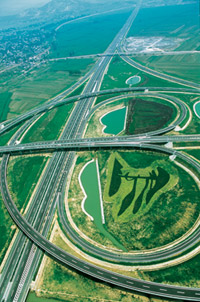 Located in the deep hinterland of the Yangtze River Delta, the Chinese mainland’s most dynamic region, Anhui not only benefits from the advanced coastal region’s economic spin-offs and industrial transfers, but also acts as a bridge in the implementation of the policies of “Great Development of West China” and the “Rise of Central China Strategy” as the province enjoys the geographic advantage of linking north to south and east to west. Located in the deep hinterland of the Yangtze River Delta, the Chinese mainland’s most dynamic region, Anhui not only benefits from the advanced coastal region’s economic spin-offs and industrial transfers, but also acts as a bridge in the implementation of the policies of “Great Development of West China” and the “Rise of Central China Strategy” as the province enjoys the geographic advantage of linking north to south and east to west.The big cities of Shanghai, Nanjing and Wuhan lie within a 500-kilometre radius of Hefei, Anhui’s capital. That same radius contains 500 million people who account for nearly 40 per cent of the national GDP. Anhui’s multi-pronged transport system, with international airports, expressways, high-speed railways and inland waterways, makes it an important national transport hub and logistics centre. The province’s six airports include Xinqiao International Airport, which has completed its trial period and will be fully operational in the first half of 2013. Both its expressways and its railways exceed 3,200 kilometres, and a comprehensive transport network links key cities. Nowhere in China is a denser concentration of high-speed railways either finished or under construction. Fast trains from Hefei reach Nanjing in one hour, Wuhan in two hours, Shanghai in three hours and Beijing in less than four hours. The province’s inland waterways meander for 6,525 kilometres. Anhui’s section of the Yangtze River has 399 berths for large ships (with 1,000-tonne-plus carrying capacities), the most in China’s central or western regions. The State Council in Anhui has approved seven open ports, the most in central China. Abundant resources, strong industries 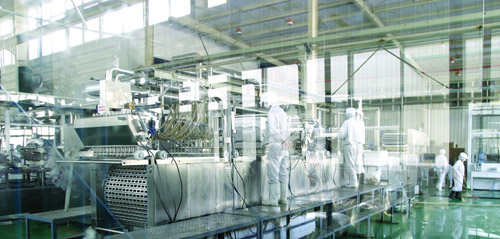 Fertile land means that Anhui’s annual cereal output usually exceeds 30 million tonnes, one of the nation’s highest. The plentiful mineral resources range across 158 types, and the reserves of 38 of those, including coal, iron, copper and limestone, place Anhui among China’s top suppliers. Coal reserves alone exceed 48 billion tonnes. Fertile land means that Anhui’s annual cereal output usually exceeds 30 million tonnes, one of the nation’s highest. The plentiful mineral resources range across 158 types, and the reserves of 38 of those, including coal, iron, copper and limestone, place Anhui among China’s top suppliers. Coal reserves alone exceed 48 billion tonnes. Anhui also thrives on rich educational resources, with 2,091 research institutes (with 1.82 million professional technicians), 107 colleges and universities (with 1.02 million students), five National Big Science Projects, two National Laboratories, 15 National Key Engineering Laboratories and 20 National Engineering (Technology) Research Centres. Only Beijing exceeds Hefei’s dense concentration of National Big Science Projects. Anhui even leads the world in some research, with tokamak nuclear fusion devices and quantum communication technology among its achievements. 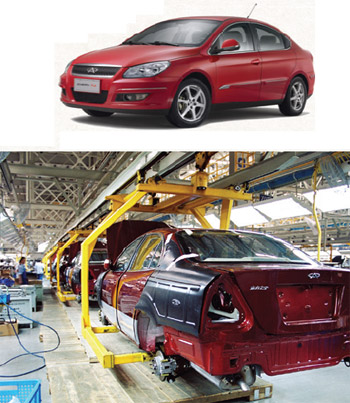 The big advantages arising from natural, educational and human resources bolster Anhui as a base for energy, raw materials, hi-tech and modern equipment. Many of its industries are influential and competitive nationally and globally. Sales revenue from just six industries, namely equipment manufacturing, automobiles, household appliances, steel, non-ferrous metals and petrochemicals, exceeds US$16.1bn. The big advantages arising from natural, educational and human resources bolster Anhui as a base for energy, raw materials, hi-tech and modern equipment. Many of its industries are influential and competitive nationally and globally. Sales revenue from just six industries, namely equipment manufacturing, automobiles, household appliances, steel, non-ferrous metals and petrochemicals, exceeds US$16.1bn. Anhui has coal-mining bases in Huainan and Huaibei. Its copper output from the Tongling Nonferrous Group leads the nation, steel production at Maanshan Iron and Steel ranks sixth nationally and Anhui Conch Cement Co’s cement quantities rank third globally and first in Asia. The province’s production of four major household appliances (air conditioners, televisions, refrigerators and washing machines) is about 80 million pieces, accounting for approximately 20 per cent of the national total. Among cities, Hefei ranks as China’s biggest production base for household appliances. As for auto exports, Anhui leads the nation with 22.1 per cent of China’s total. The province’s HELI Forklift Group has produced the most forklifts for 21 consecutive years. Hitachi Construction Machinery (China) Co’s output of excavators ranks third. Other strategic industries show strong momentum too. In 2012, the output of eight major emerging industries (electronic information, new-energy automobiles, new energy, biology, new materials, high-end equipment manufacturing, energy-saving/ environmental protection and public security) hit US$81.96bn, up 33.1 per cent on the previous year. Hybrid-electric vehicles from Chery and battery-electric vehicles from Chery and JAC have appeared. The number of battery-electric buses used for national demonstration purposes leads the country. Hefei also acts as a national industrial base making new types of panel displays. The city has established a complete industrial framework for panel displays, such as TFT-LCD, PDP and LED. Products and processes of copper-, iron- and silicone-based new materials, and the processing of non-metallic materials, watersoluble high-polymer materials, nanometer materials and their related applications hold immense promise. Superior investment environment, great development potential Anhui has entered a golden period of strategic opportunities. In 2012, the province achieved excellent trade performance including: • total production value reaching US$276.94bn, up 12.1 per cent, the highest growth rate achieved among cities in central China • fiscal revenue totalling US$48.7bn, an increase of 14.9 per cent • fixed asset investment value amounting to US$242.23bn, up 24.2 per cent • retail sales of consumer products reaching US$91.48bn, an increase of 16 per cent • export and import value at US$39.33bn, up 25.6 per cent • foreign direct investment totalling US$8.64bn, an increase of 30.3 per cent  Anhui has successfully implemented a national policy to formulate a comprehensive, full-coverage strategic plan. It has set up three national pilot technology-innovation projects, including the establishment of the Industrial Transfer Demonstration Zone of the Wanjiang City Belt, the Hefei-Wuhu-Bengbu Comprehensive Experimental Zone for Invention and Innovation and the International Tourism and Culture Demonstration Region in Southern Anhui. The northern part of Anhui is treated as a Central China Economic District endowed with experimentation privileges and preferential policies, including fiscal subsidies, tax incentives and refunds, exemptions from administrative fees and incentives to nurture talent.  Business costs remain quite low. Essential production factors such as land, labour, water, power and gas cost 20 per cent less than in the eastern coastal region. Industry is developing in leaps and bounds thanks to a strategic geographical location in the east, a cost-effective centre and a rich reservoir of resources in the west. Business costs remain quite low. Essential production factors such as land, labour, water, power and gas cost 20 per cent less than in the eastern coastal region. Industry is developing in leaps and bounds thanks to a strategic geographical location in the east, a cost-effective centre and a rich reservoir of resources in the west. For years, Anhui has provided a cordial, secure and profitable place for investors, with the aim of establishing an open-minded and forward-looking province. The momentum of co-operative development continues to build. In fact, Anhui looks increasingly attractive for international capital, which further spurs its economic growth. As at the end of 2012, Anhui’s trade partners covered more than 210 countries and regions. Its total foreign capital in use soared to US$48.62bn in areas such as manufacturing, agriculture, transport, municipal construction, finance, commerce, education, science and culture. Foreign capital flows into Anhui from almost 109 jurisdictions. So far, 65 Fortune 500 companies have established 93 branches there, among them Continental, Siemens, ABB, Unilever, Mitsubishi, Hitachi, Samsung, Delphi, General Motors, Johnson Controls, Honeywell, UPS, Nippon Steel and Carrefour. 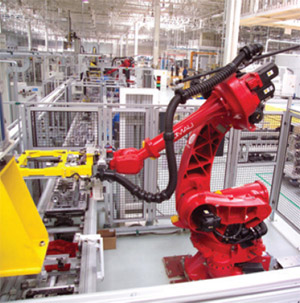 Now vigorously heading towards the goal of building a wealthy society, Anhui is striving to double its 2012 total production value by 2017. In addition, extra effort is being put into developing new sectors and the service industries. These include areas like electronic information, home appliances, automobile and equipment manufacturing, new materials, new energy, the processed agricultural industry, textiles and footwear, food and medicine, new display devices, advanced intelligent products and public security systems. Now vigorously heading towards the goal of building a wealthy society, Anhui is striving to double its 2012 total production value by 2017. In addition, extra effort is being put into developing new sectors and the service industries. These include areas like electronic information, home appliances, automobile and equipment manufacturing, new materials, new energy, the processed agricultural industry, textiles and footwear, food and medicine, new display devices, advanced intelligent products and public security systems. Anhui is making a great effort to become economically strong, culturally energetic and ecologically excellent while staying highly liveable and enterprise-friendly, creating an ideal situation complete with a prosperous economy, excellent ecology and harmonious society.
More About Anhui 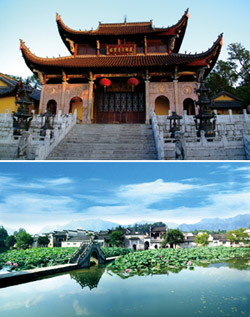 The Chinese character 徽(Hui) from “Anhui” is composed of four parts representing people, culture, mountains and water. Combining those parts creates a vivid description of Anhui. The province not only features a charming natural landscape, but is also home to cultural relics from Buddhism, Taoism and Hui culture, a culture from which many Chinese characteristics originate. The Chinese character 徽(Hui) from “Anhui” is composed of four parts representing people, culture, mountains and water. Combining those parts creates a vivid description of Anhui. The province not only features a charming natural landscape, but is also home to cultural relics from Buddhism, Taoism and Hui culture, a culture from which many Chinese characteristics originate. Anhui is renowned for its mountains. Huangshan Mountain has been crowned with the three laurels of World Cultural Heritage site, World Natural Heritage site and World Geopark site. Jiuhua Mountain is one of the four well-known Buddhist mountains in China, honoured as an international Buddhist site. Tianzhushan Mountain, also known as “Ancient Nanyue”, a national park, is regarded as a cave paradise by Buddhists and Taoists. There are other mountains in Anhui Province, such as Langya Mountain, made famous in the essay The Roadside Hut of the Old Drunkard written by Ouyang Xiu, the grand Dabie Mountain, and Qiyun Mountain, praised as “the best mountain south of the Yangtze River” by Emperor Qianlong. Anhui is also known for its beautiful rivers and lakes, such as the Yangtze River, Huaihe River, Xin’anjiang River, Chaohu Lake (one of the five biggest freshwater lakes in China), Taipinghu Lake and some 4,000 reservoirs. The province’s picturesque mountains and rivers seem like vivid landscape paintings.  Finally, Anhui is famous for being home to many historic figures including the great thinkers Laozi, Zhuangzi, Zhu Xi and Dai Zhen, the great physician Hua Tuo, political and military leaders like Cao Cao, Zhu Yuanzhang and Li Hongzhang, the leader of Anhui merchants Hu Xueyan, pioneers of the New Culture Movement Chen Duxiu and Hu Shi, the great educator Tao Xingzhi, and Nobel Prize-winning physicist Yang Zhenning. Anhui Province has also nurtured cultures apart from Hui culture, including Huaihe culture, Tongcheng culture and Jian’an culture, as well as colourful arts including Huangmei Opera, Hui Opera, and the Flower and Drum Dance. Anhui merchants, widespread in the Ming and Qing Dynasties, were so prevalent they gave rise to the saying “no town without Anhui merchants”. Finally, Anhui is famous for being home to many historic figures including the great thinkers Laozi, Zhuangzi, Zhu Xi and Dai Zhen, the great physician Hua Tuo, political and military leaders like Cao Cao, Zhu Yuanzhang and Li Hongzhang, the leader of Anhui merchants Hu Xueyan, pioneers of the New Culture Movement Chen Duxiu and Hu Shi, the great educator Tao Xingzhi, and Nobel Prize-winning physicist Yang Zhenning. Anhui Province has also nurtured cultures apart from Hui culture, including Huaihe culture, Tongcheng culture and Jian’an culture, as well as colourful arts including Huangmei Opera, Hui Opera, and the Flower and Drum Dance. Anhui merchants, widespread in the Ming and Qing Dynasties, were so prevalent they gave rise to the saying “no town without Anhui merchants”.
For further information: The Bureau of Commerce of Anhui Province 1569 Qimen Road, Hefei New Municipal and Cultural District Development, Anhui Province, 230062, China Tel: 86-551-6354-0216 Fax: 86-551-6354-0142 Email: invest@ahbofcom.gov.cn Web: www.ahbofcom.gov.cn |
|||||||||||||||||||||||||||||||||||||||||||||||||||||||||||||||||||||||||||||||||||||||||||||||||


